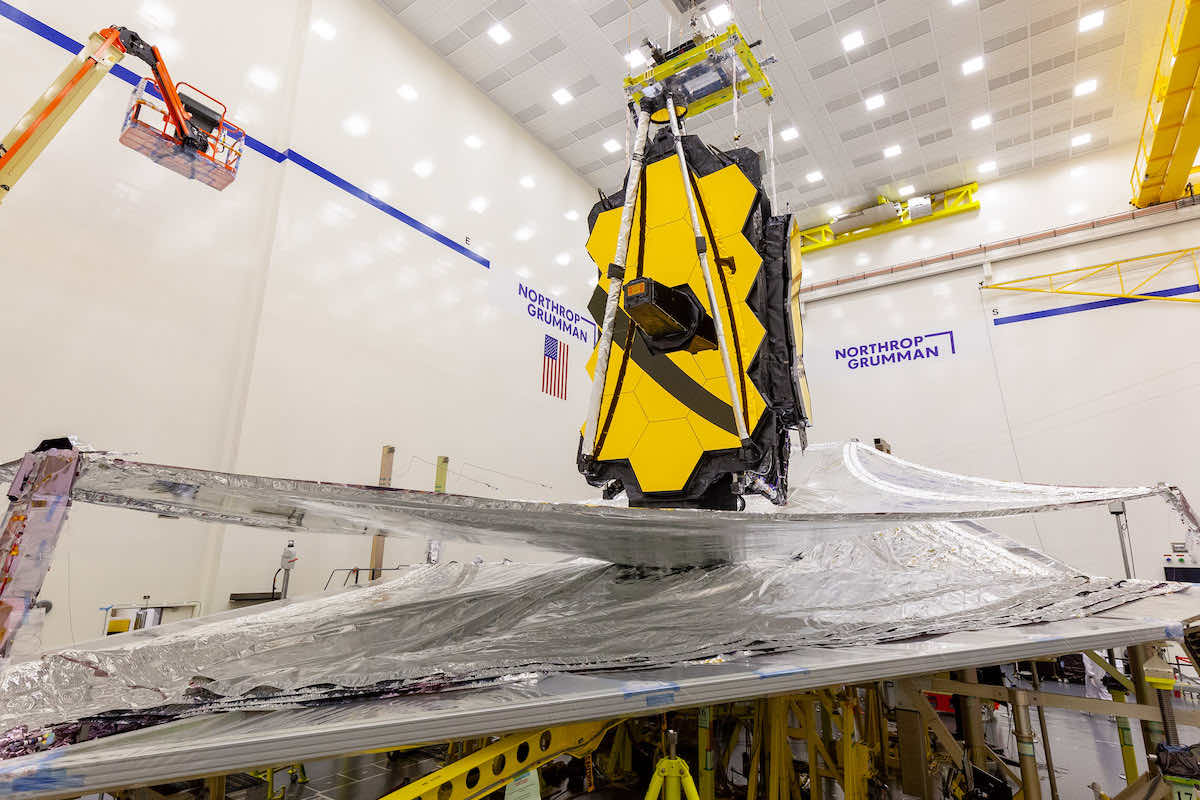Engineers take longer to assess Webb’s behavior in space before continuing with deployments – Spaceflight Now
STORY WRITTEN FOR CBS NEWS AND USED WITH PERMISSION
Engineers who activated the James Webb Space Telescope decided on Sunday not to tighten the observatory’s critical sunshade to allow more time to verify the performance of its power systems and overall behavior now than several major deployments. are completed.
“Nothing we can learn from field simulations is as good as analyzing the observatory when it is operational,” said Bill Ochs, the Webb project manager, in a NASA blog post. Sunday. “Now is the time… to learn all we can about his basic operations. Then we will move on to the next steps.
NASA does not provide “live” coverage of Webb deployments and has not held a media briefing since the telescope launched on Christmas Day. But the latest blog post said engineers wanted to characterize the performance of the telescope in more detail now that it’s finally in space, while also making sure that the motors needed to tension the sunshade are at “optimal” temperatures before continuing.
No technical details were provided.
Since launching on Christmas Day, Webb has successfully fine-tuned its trajectory with two shots from precision thrusters, deployed its critical solar panel, disengaged the high-gain antenna that it will use to relay science data back to Earth, and extended an “impulse shutter” to counteract the destabilizing pressure of the solar wind.
It also raised its main mirror and science instruments about four feet to further insulate them from the heat generated by on-board electronics and other systems.
On Friday, two telescoping arrows extended to either side of two paddles, pulling and unfolding Webb’s tennis court-sized sun visor to initiate one of the most complex procedures of the initial activation of the l ‘observatory.
Made up of five layers of hair-thin Kapton, the Parasol is central to Webb’s goal of capturing the dim light of the first stars and galaxies to light up following the birth of the cosmos’ Big Bang nearly 14 billion years old.
To record this ancient radiation, now extended into the infrared by the expansion of space itself, Webb must be cooled to less than 50 degrees absolute zero, or nearly 400 degrees below zero Fahrenheit. The light and heat blocking shield needed for this, which was folded for launch like a parachute’s parachute, is now being extracted.
The two pallets containing the sunshade were deployed and locked in place on Tuesday, one on either side of Webb’s 21.3-foot main mirror. On Thursday, protective covers were ordered to roll over each pallet, exposing the still-folded sunshade membranes to space.
The actual deployment began on Friday when the two telescoping booms perpendicular to the paddles began to extend, one at a time, slowly pulling both sides of the shield and unfolding the membranes in the process.
This work began later than planned to give engineers time to confirm that 107 membrane retainers, used to hold the folded layers in place during launch, worked as required.
They did, and with the two arrows extended to give the sunshade its iconic kite shape, all five layers must now be stretched using motorized cables going through dozens of pulleys. Tension is needed to produce a space between each layer, providing space for excess heat to migrate outward to the sides.
Because the ramp extension work took longer than expected, mission leaders put tension on hold on Saturday to give the team a chance to collect their collective breath. Another delay was ordered on Sunday, in part to ensure that the motors necessary for the complete extraction of the blind were at the required temperatures.
“We’ve spent 20 years in the field with Webb, designing, developing and testing,” said Mike Menzel, chief systems engineer at Webb. “We had a week to see how the observatory actually behaves in space. It is not uncommon to learn certain characteristics of your spaceship once you are in flight. This is what we are doing at the moment.
“So far, the major deployments we have executed have gone as well as we could have hoped. But we want to take our time and understand all we can about the observatory before moving forward.


Comments are closed.